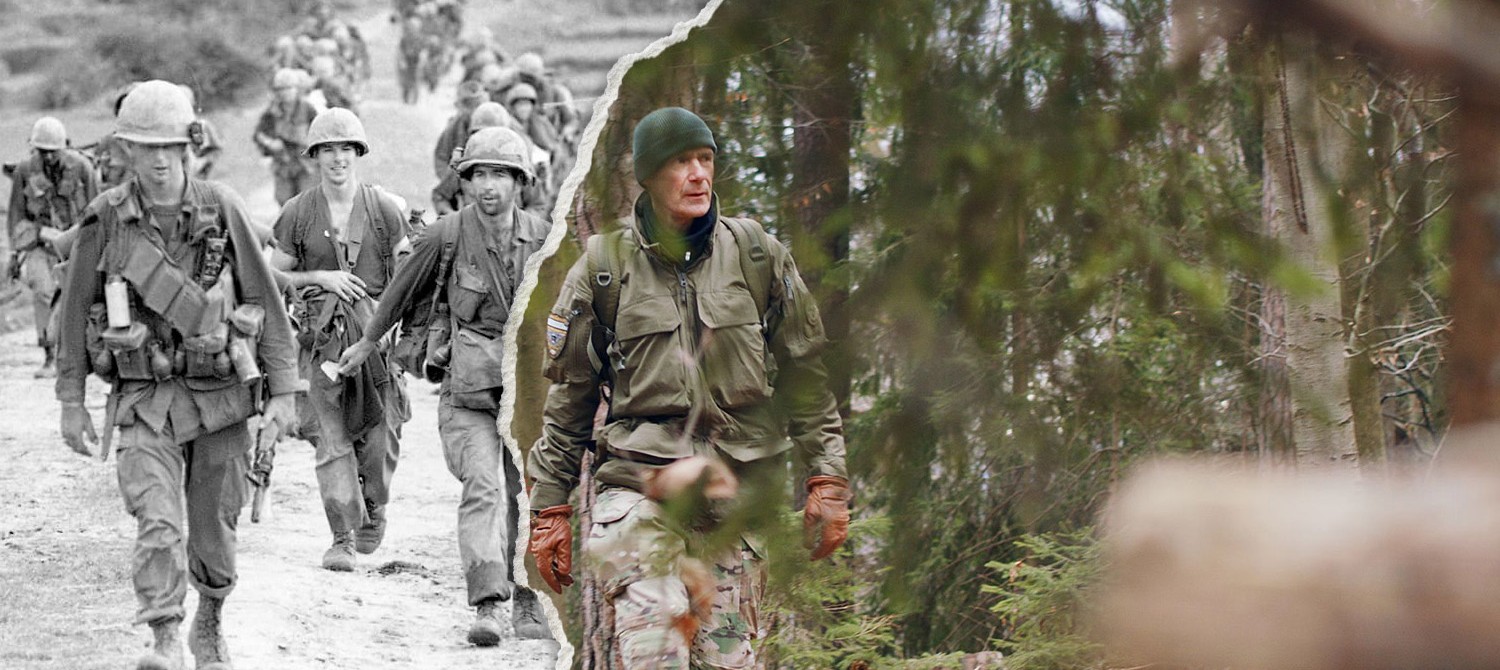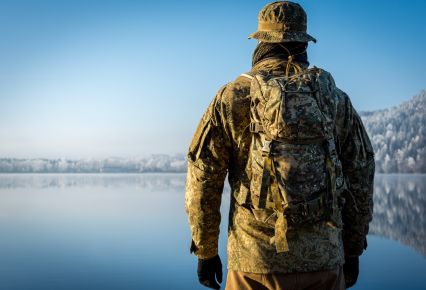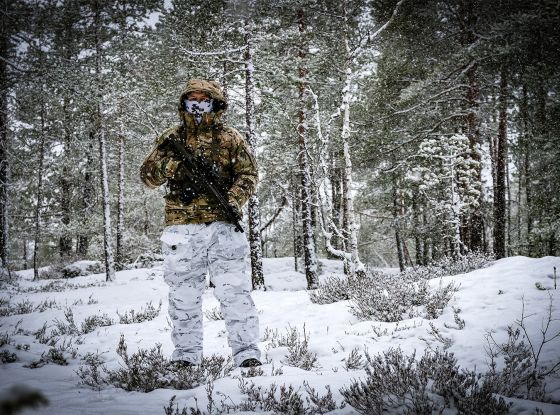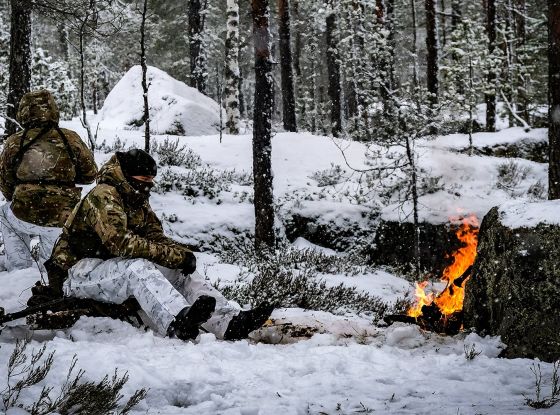There is perhaps no other jacket as iconic and popular as the American M-65 military jacket. Chances are you have seen plenty of them or maybe even owned one or two during your life—but if neither is the case, then you must have been hiding like a hermit on the dark side of the moon.
In this blog post:
Tracing its origins to the Vietnam War (but reflecting design influences that go back even further), this piece of apparel is still going strong over 60 years later. In fact, the popularity and impact of the M-65 military jacket are unbroken and continue to show up in modern designs.
So, let’s take a moment to look at this remarkable piece of military history and appreciate it for what it is—a military classic.
Predecessors of the M-65 jacket
Almost every piece of today’s military apparel has a predecessor. In the case of the M-65 jacket, its forebearer was a World War II windbreaker that underwent a continuous evolution involving multiple improvements suggested by experience with the armed forces’ operational use of the garment.
Inspired by civilian outerwear serving as both wind and rain protection, the M-41 field coat (in true military fashion, the “41” stands for the year of first production, 1941) set the stage for the iconic American M-65 jacket that was to come (in 1965). The M-41 jacket was part of the standard U.S. military uniform worn during the Second World War and featured a wool flannel lining for insulation. Because of its colour and material, the M-41 was nicknamed “O.D. Cotton Field Jacket” (what we nowadays refer to as O.D. comes from the term “Olive Drab,” the particular colour of military olive available in various shades).
Two years after its introduction, the M-41 underwent design changes and evolved into the M-43. Featuring a detachable hood along with an expanded hip width and a hip drawstring for a closer fit, the M-43 was produced in a darker shade of O.D.
The next evolution occurred in 1951 with the introduction of snap buttons for the front stormflap, button cuffs, and a button-on hood. Other than that, the Model M-51 was produced in the same shade of O.D. green utilised for the M-43. The M-51 saw action in the Korea War and in the early phases of the Vietnam War before yielding the field to the newborn M-65 jacket in the year 1965.
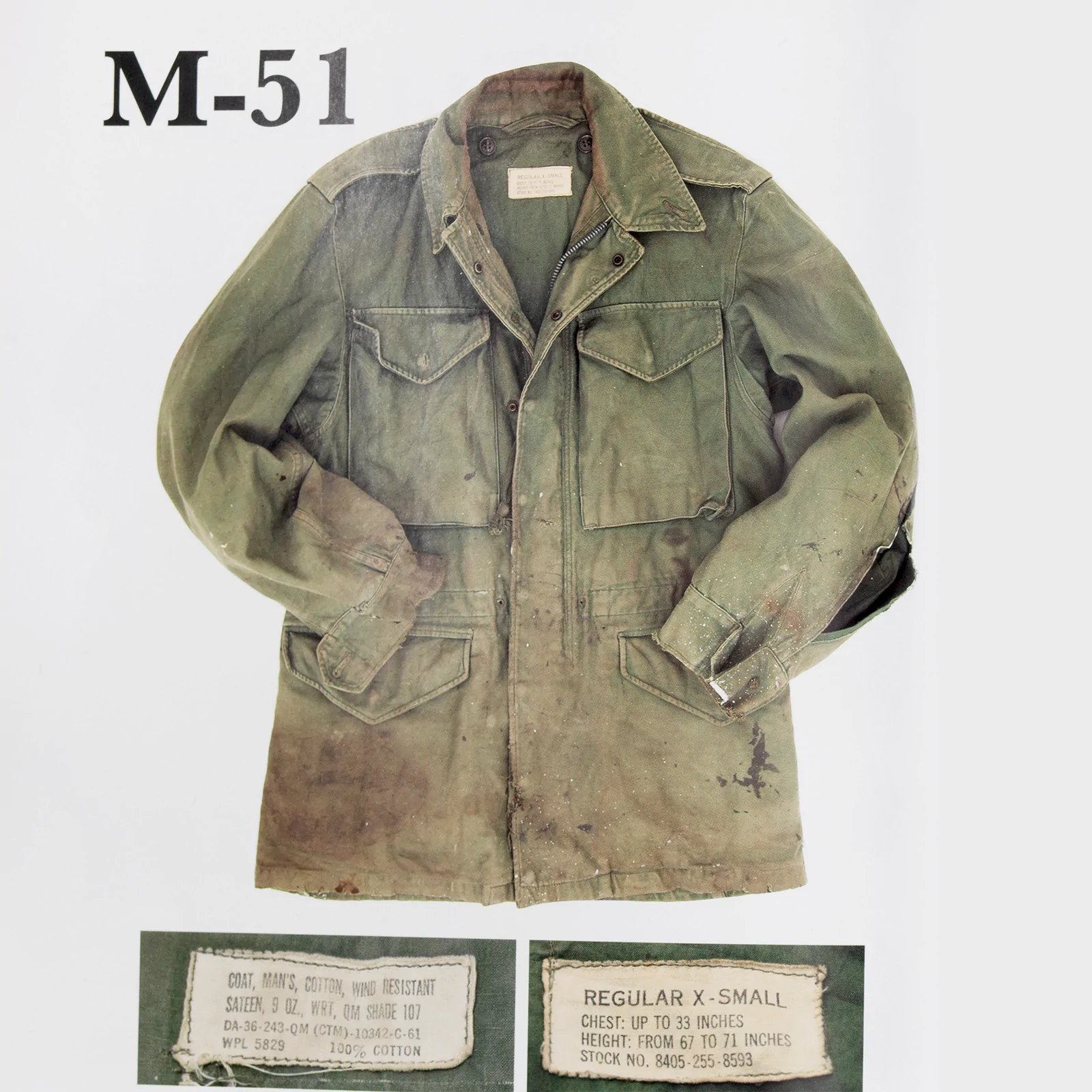
Image source: Bulang & Sons
Birth of the M-65 jacket
Although several companies produced M-65 field jackets, the first of these (which, by the way, gave the M-65 some of its most distinctive features) was Alpha Industries, a U.S. Department of Defence contractor of at the time only a few years’ standing. Alpha Industries was responsible for many of the M-65's changes we now know and cherish. One of the biggest was the upgrade to a 50/50 nylon-cotton (NYCO) fabric blend. As a result, the wind- and water-resistance of the jacket improved greatly. Another big change was fixing the detachable hood to the collar, which made it possible for the wearer to stow the hood within a zippered compartment. Velcro® hook-and-loop fasteners replaced the cuff buttons, while additional snap buttons were placed along the storm flap.
Also, the insulation was improved with a warmth-enhancing, button-attached, quilted liner similar in construction to that of the famous and much-beloved “Woobie” introduced as a replacement for the military’s standard-issue wool blankets. As a result, the M-65 jacket proved to be extremely versatile in the challenging and ever-changing weather conditions encountered in Vietnam—especially those prevalent during monsoons in South Vietnam’s Central Highlands.
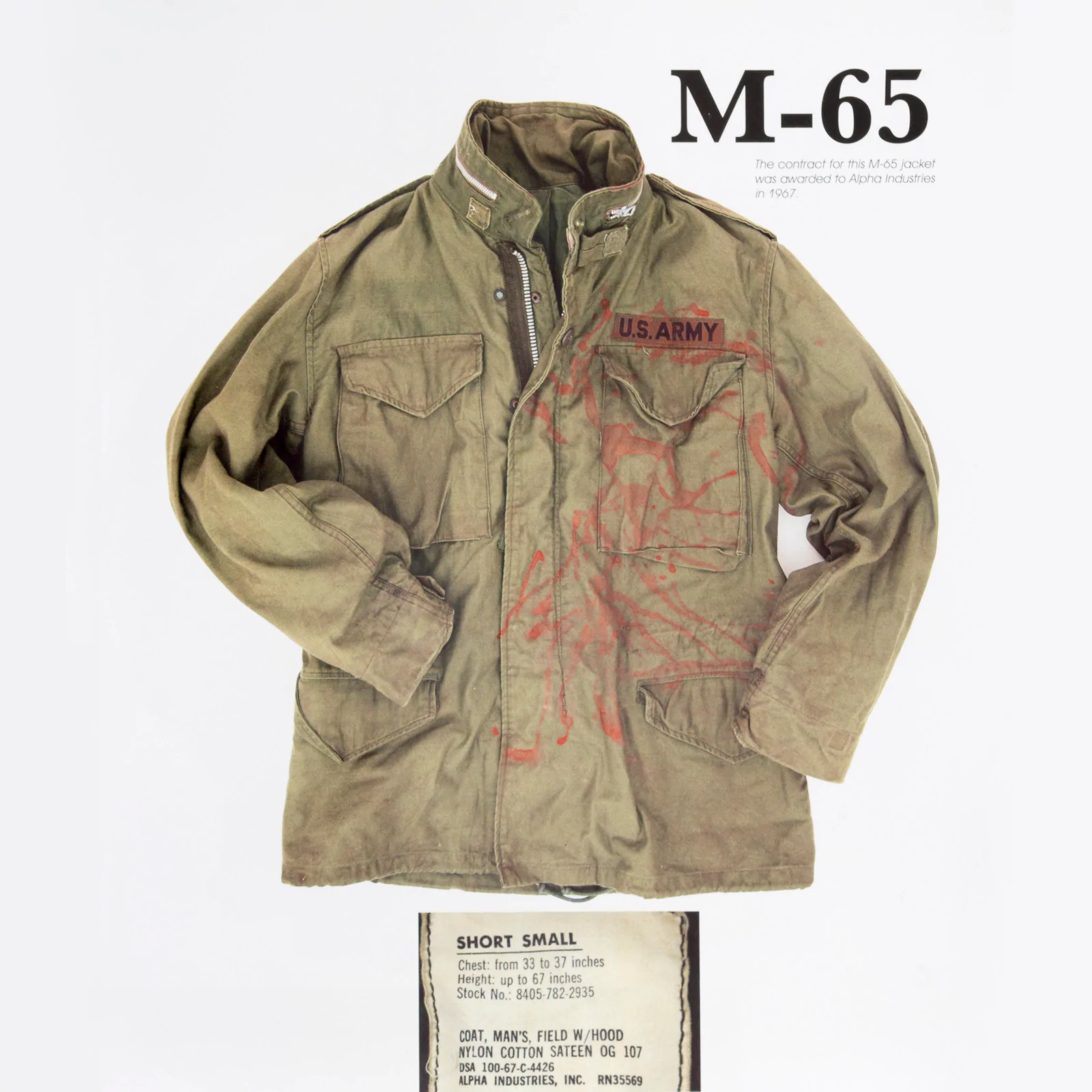
Image source: Bulang & Sons
Military use and impact
The then-new M-65 jacket was produced as before in a certain shade of green—this time “Olive Green 107,” a colour intended for use in the jungle in which U.S. forces were fighting Complementing Olive Green 107 later was the 1980s’ predominantly brown M-81 Woodland camouflage pattern as well as desert camouflage patterns such as 6-colour desert (“Chocolate Chip” Desert Camouflage) and 3-colour desert camouflage. To enable the M-65 jacket to perform better in these hot, dry environments, desert versions were made of 100-percent cotton; these were seen during the Persian Gulf War which began in 1990.
Other Western armies picked up on the design of the M-65. As a result, you can find variations of the jacket in countries like Austria, while in Belgium that nation’s M-88 jacket has American styling but with angular pockets added. However, allies weren’t alone in their appreciation of the M-65 design—among the jacket’s fans were terrorist leader Osama bin Laden who was photographed at one point wearing a woodland camouflage version of the iconic parka.
Returning to the subject of M-65 camouflage. The last camouflage pattern added to the repertoire of this classic was the infamous Universal Camouflage Pattern (a.k.a. UCP) in 2005. Sadly, though, the days of the M-65 jacket were numbered. It was officially retired in 2009, a casualty of the global war on terrorism combined with rapid changes in the apparel industry and in soldiering equipment. Technical fabrics, new load-bearing solutions, and intensifying battlefield performance requirements made it necessary to seek a more modern approach to better equipping fighting personnel. That said, the legacy of the M-65 jacket was nonetheless firmly established—and by this point had been for already more than 30 years!
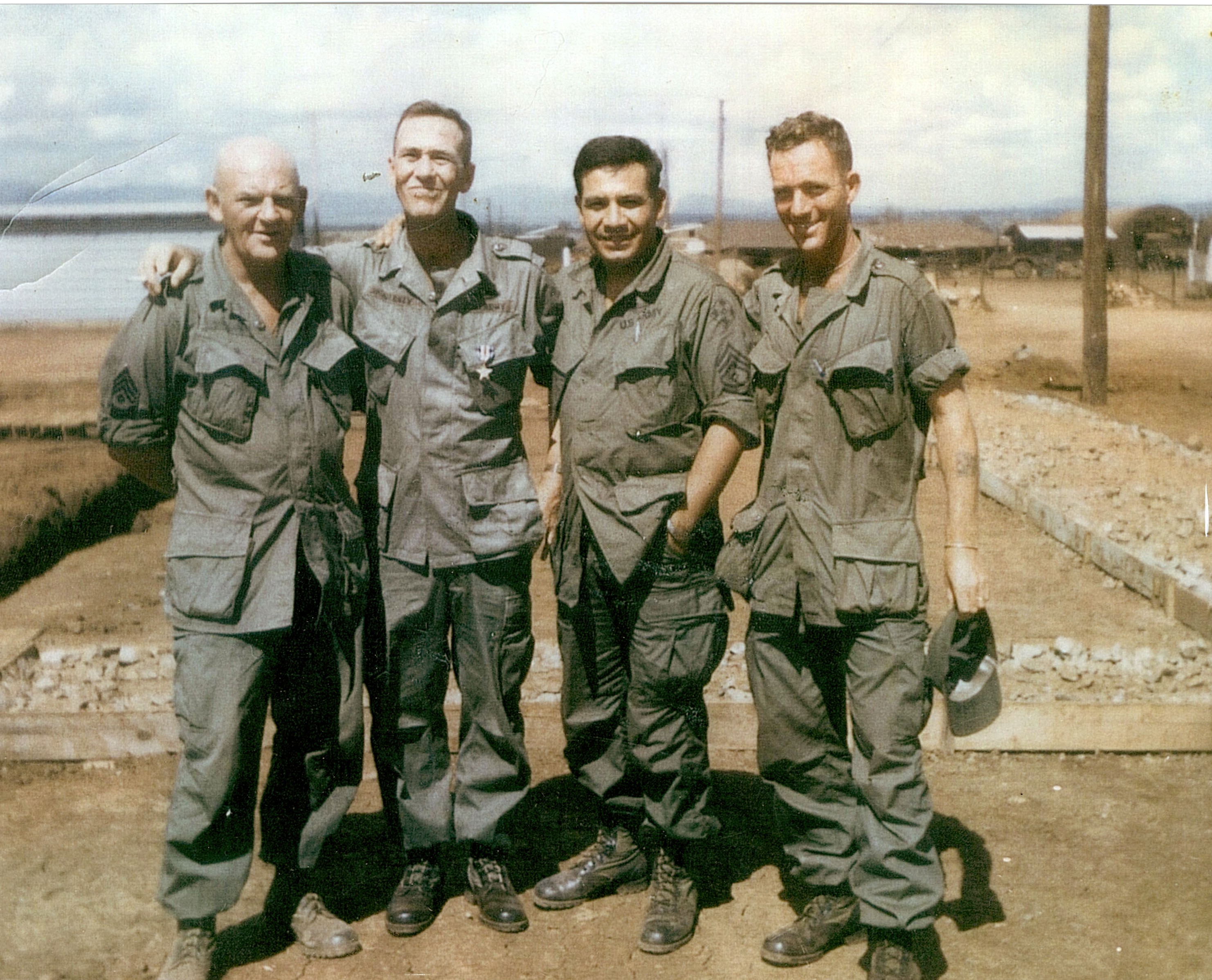
Image source: US Army
How the M-65 became legendary: The role of Hollywood and counterculture
The war in Vietnam produced considerable quantities of military surplus clothing. These—including the M-65 field jacket--eventually found their way into civilian life. Military veterans helped by bringing home with them the M-65s they were issued before going into combat.. The jacket had a distinctively cool look, so it was no surprise that urban sub-cultures quickly snapped up M-65s by the truckload.
It also became a favourite of the anti-war movement, which gave the jacket special cachet as a piece of counterculture symbolism (especially after veterans joined the protests while wearing their M-65s). But what really boosted the popularity of the jacket was it being seen worn by celebrities like Beatles musician John Lennon and newsmakers like anti-war activist John Kerry (who years later ran for the office of U.S. president). In 2015, the New York Times newspaper concluded that the M-65 jacket made it possible for the protesters of the Vietnam era to show solidarity with disillusioned soldiers coming home from the war while at the same time provoking the military system. It is fair to say that, eventually, all classes of society—from the beggar in the streets to the rich and powerful—took to wearing the M-65.
Hollywood was the final catalyst that made the jacket truly famous. Central characters of movies like “Taxi Driver” (starring Robert DeNiro), “Serpico” (starring Al Pacino), “Annie Hall” (starring Woodie Allen) all wore the jacket in style, which had a powerful influence over film audiences. Indeed, Rambo—played by Silvester Stallone in 1982’s “First Blood” and the four sequels that followed—would be unthinkable without his O.D. M-65 and the American flag emblazoned upon it.
But it wasn’t only American movies and television that helped propel the M-65 to fame. There was also a German television series, “Schimanski”. It starred a police inspector who wore an M-65 as his trademark—so popular was this show and its lead character that German audiences quickly came to see the M-65 for the iconic piece of clothing that it had become.
Needless to say, the jacket made it possible for an entire generation to copy their idols and feel like a star. At that moment, the M-65 was more than an article of useful clothing; it was also representative of a certain lifestyle and evocative of good vibes.
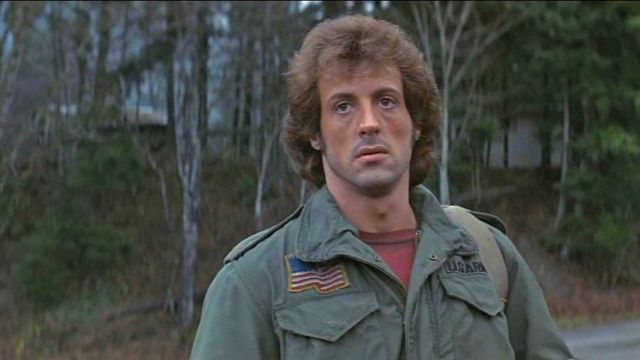
Image source: First Blood (Ted Kotcheff, Orion Pictures, 1982)
The M-65 jacket today
Nowadays, the influence of the M-65 field jacket can be seen practically everywhere. Countless fashion companies and retail outlets made use of the M-65 design in one way or another, be it as urban streetwear or as a high-fashion statement. The original M-65 is still available, manufactured today by several companies in the tactical industry as well as by regular government contractors.
The timeless design and functional layout of the pockets make the jacket still a much sought-after piece. Its toughness is appreciated not only as a fashion statement but also by users in bushcraft and outdoor circles. Nevertheless, one can notice that the original is slowly being pushed aside by its offspring to make way for newer interpretations.
UF PRO and the legacy of the M-65 jacket
Our Head of Product Development, Armin Wagner, considers the M-65 field jacket to be not only one of “the coolest parkas there is” but also the best platform upon which functional elements can be added. Those who have seen his in-depth video on this garment know that the M-65 field jacket was the basis for UF PRO’s M2 Parka.
The M2 Parka brings several improvements to the table: UF PRO’s dedicated air/pac® system for better weight distribution and the prevention of thermal bridges; larger breast pockets with side access; upper arm pockets; an extended side-zipper for ventilation and better access to your belt; a poacher’s pocket on the back; and an upgraded hood with UF PRO’s Hood/Harness® system. All these in combination with several added adjustment cords and EtaProof fabric as the base material resulted in a whole new jacket that can pick up and carry the torch of the M-65.
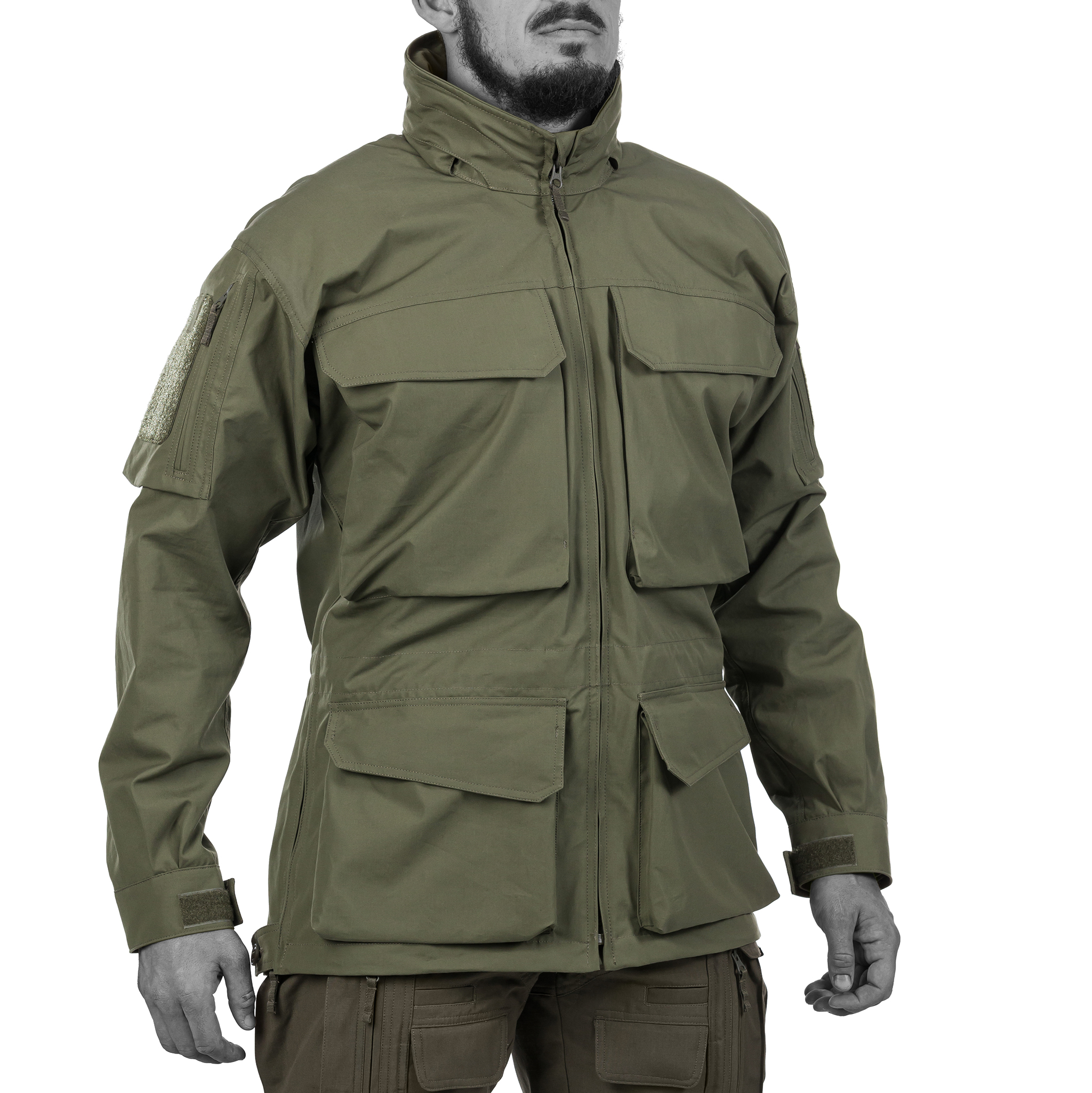
Conclusion
There are not many jackets out there as famous, well-known, and beloved as the M-65 field jacket. Blessed with a smart, functional, and comfortable design, it has gained many followers and remain a fashion fixture among nearly all segments of society.
With 44 years of service and everyday use by millions of people, one can understand why this jacket is such an iconic piece of military and apparel history. It has inspired many designers and companies, resulting in a magnitude of different versions. With the M2 Parka, UF PRO pays respect to the venerable jacket, providing our upgraded interpretation to users worldwide.
Source of the cover image: Reddit

